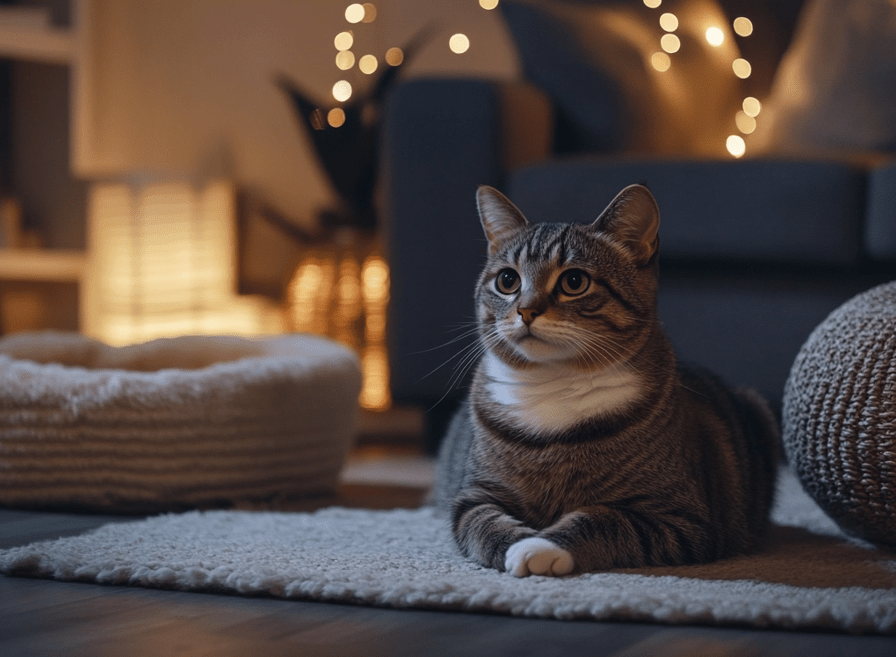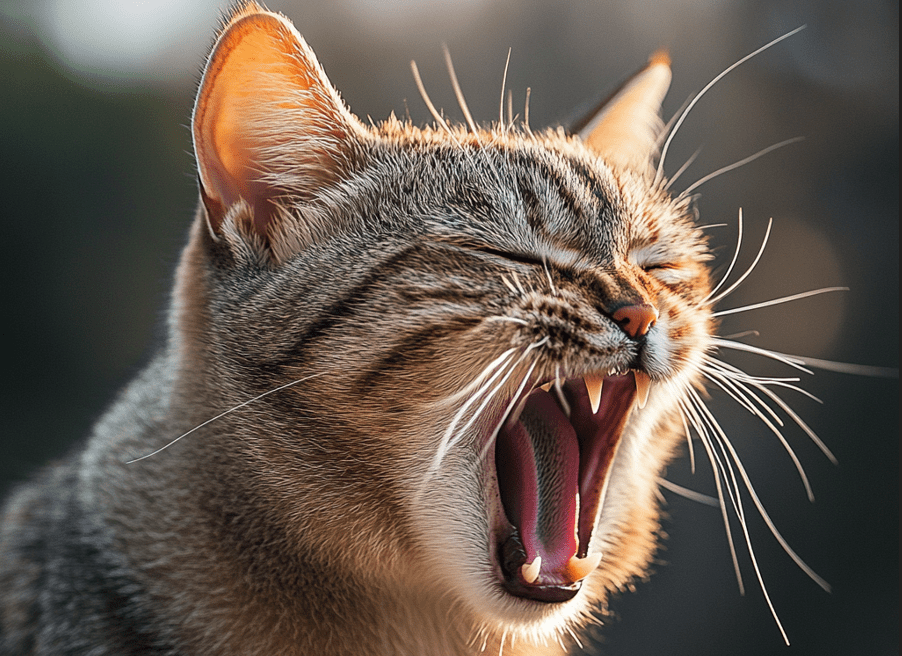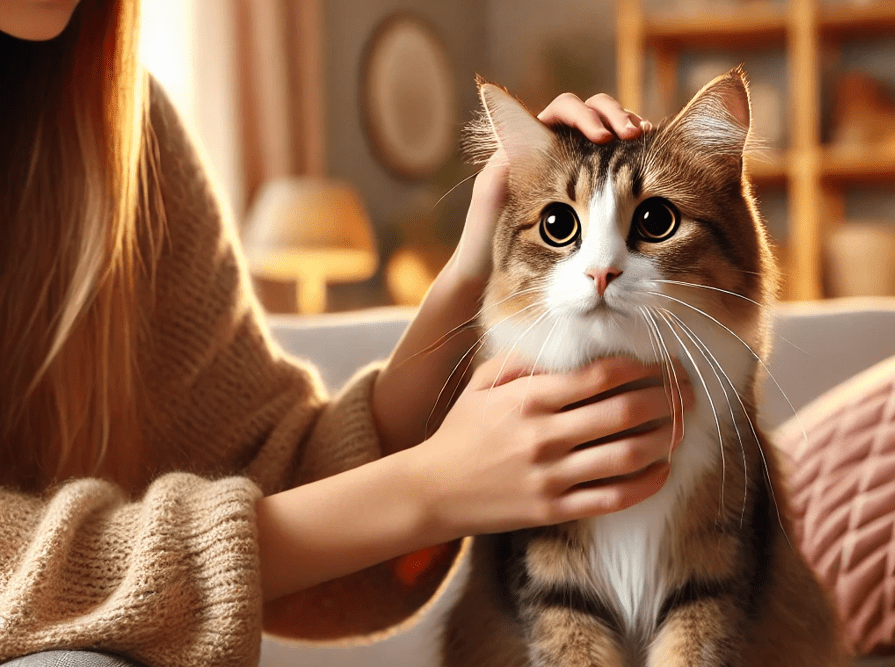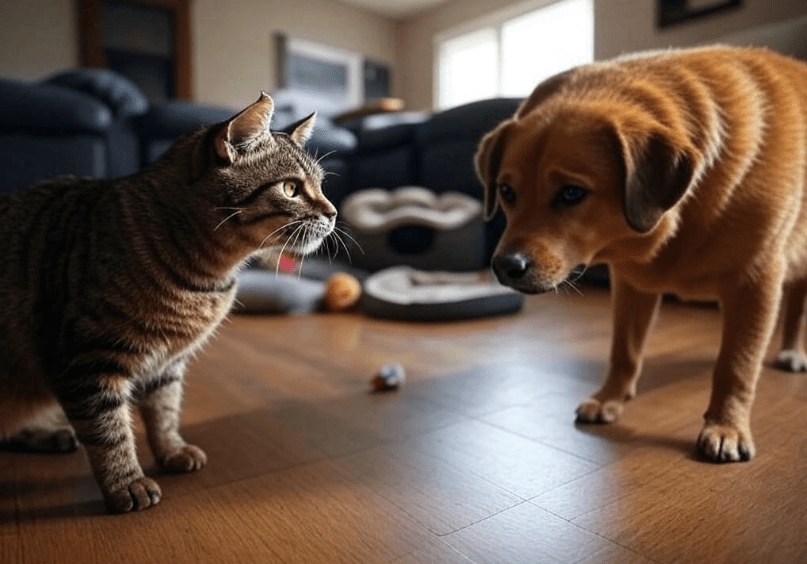
Imagine coming home to a scene of fur flying, hisses echoing through the house, and your pets locked in a standoff. What started as a peaceful coexistence has turned into a battleground, with your cat displaying aggression towards other pets. Whether it’s a new kitten, a resident dog, or even another feline, unchecked aggression can disrupt harmony and leave pet owners feeling helpless.
Understanding why cats act aggressively and how to manage it is crucial for restoring peace. This comprehensive guide explores the root causes of feline aggression, effective intervention techniques, and long-term solutions to ensure a stress-free home for all your pets.
What You’ll Discover in This Guide
By the time you finish reading, you’ll have answers to every question swirling in your mind:
The Hidden Triggers Behind the Hisses – Why does your sweet lap cat suddenly turn into a tiny tiger around other pets?
The Different Faces of Feline Aggression – Not all aggression is the same. Learn to decode whether your cat is acting out of fear, dominance, or misplaced playfulness.
The Body Language of an Impending Attack – Cats don’t just snap without warning. Discover the subtle cues that signal a storm is brewing.
How to Safely Step In When Fur Flies – Breaking up a cat fight the wrong way can make things worse. Learn the safest, most effective intervention techniques.
The Long Game: Turning Enemies into Companions – Quick fixes don’t last. We’ll explore proven methods for reintroducing pets, building trust, and fostering peaceful coexistence.
When It’s Time to Call in the Experts – Sometimes, aggression runs too deep. Find out when professional help is needed and what kind of specialist can make a difference.
This isn’t just a list of tips—it’s a blueprint for lasting peace in your multi-pet home.
Why Does Your Cat Turn Into a Tiny Terror? The Root Causes of Aggression
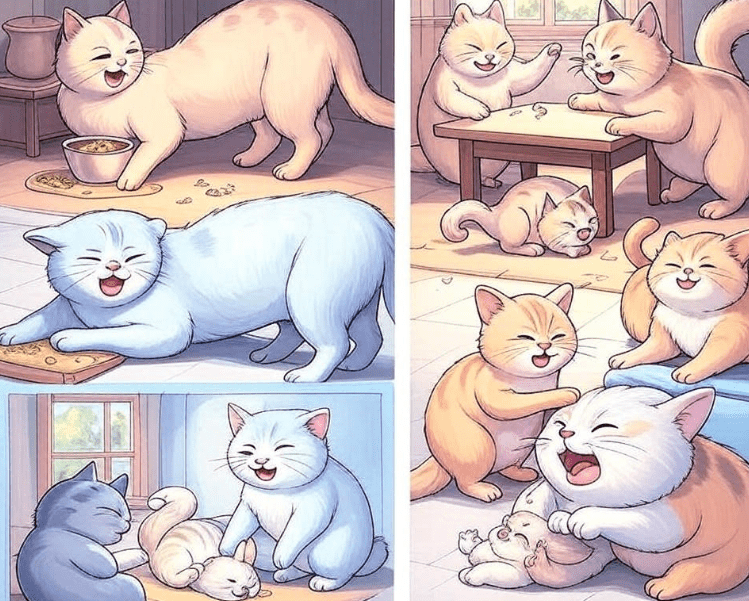
To solve the problem, we must first understand it. Cats aren’t aggressive “just because.” Their behavior is driven by instinct, past experiences, and even hidden health issues. Let’s explore the most common reasons behind aggression towards other pets.
Territorial Aggression: “This House Is Mine!”
Cats are the undisputed rulers of their domains. When a new pet enters their kingdom—whether it’s a kitten, a dog, or even a rabbit—the resident cat may see it as an invasion. This is especially true in multi-cat households where hierarchy is constantly being negotiated.
What It Looks Like:
1.The cat blocks doorways or guards resources (food bowls, litter boxes).
2.It stalks or ambushes the other pet, often without provocation.
3.Urine marking or scratching furniture increases as the cat tries to reassert ownership.
Why It Happens:
In the wild, territory means survival. Even domesticated cats retain this primal instinct. If they feel their space is being stolen, aggression is their way of saying, “Back off—this is my turf.”
Fear-Based Aggression: “I’m Scared, So I’ll Fight!”
Not all aggression comes from confidence. Sometimes, it’s sheer terror. A cat that feels cornered—whether by a boisterous dog or a dominant feline—may lash out simply because it sees no other escape.
What It Looks Like:
1.The cat arches its back, flattens its ears, and hisses.
2.It may try to make itself look bigger (puffed-up fur) or smaller (crouching low).
3.Attacks are often defensive—swiping when the other pet gets too close.
Why It Happens:
Fear is a powerful motivator. If a cat has had a bad experience with another animal (or if it’s naturally anxious), it may decide that attack is the best defense.
Redirected Aggression: “I’m Mad at That Bird, So I’ll Take It Out on You!”
This is one of the most confusing (and dangerous) types of aggression. A cat gets agitated by something it can’t reach—a stray cat outside the window, a loud noise—and, in its frustration, attacks the nearest target: your other pet.
What It Looks Like:
1.The cat is perfectly calm one moment, then explodes into violence the next.
2.The attack seems to come “out of nowhere” (though there’s always a hidden trigger).
3.The aggressor may stay highly aroused for hours, making further attacks likely.
Why It Happens:
Cats don’t have healthy outlets for frustration. When they can’t chase off the real threat, they redirect their anger onto an innocent bystander.
Play Aggression: “I Just Wanted to Play… Too Rough.”
Kittens and young cats often play by pouncing, biting, and wrestling. But when they direct this energy toward a smaller or more timid pet, what starts as fun can quickly turn scary—or even dangerous.
What It Looks Like:
1.The cat stalks and pounces, often with ears forward (not flattened).
2.Biting is inhibited (not meant to injure), but claws may still come out.
3.The “victim” (another pet) may yelp or run away, signaling distress.
Why It Happens:
Play is how cats learn hunting skills. Without proper socialization, they may not realize that other pets aren’t willing playmates.
Pain-Induced Aggression: “I Hurt, So I’ll Bite.”
An often-overlooked cause of aggression is physical discomfort. A cat in pain—whether from arthritis, dental disease, or an injury—may snap at other pets simply because it’s irritable and doesn’t want to be touched.
What It Looks Like:
1.The cat reacts aggressively when approached, even by familiar pets.
2.It may lick or guard a specific body part (indicating pain).
3.Aggression is inconsistent—sometimes the cat is fine, other times it lashes out.
Why It Happens:
Pain lowers tolerance. A cat that’s usually patient may become short-tempered when it’s hurting.
Reading the Signs: How to Tell When Trouble Is Brewing
Cats rarely attack without warning. Their bodies speak volumes—if you know how to listen.
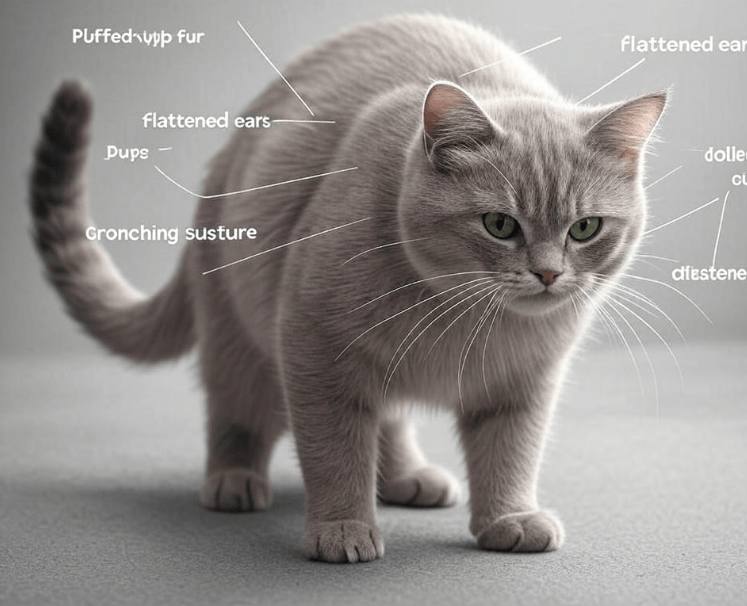
The Early Warning System
Before a full-blown fight, cats display subtle (and not-so-subtle) signals:
The Tail Tells All: A flicking or lashing tail means irritation. A puffed-up tail signals fear or aggression.
Ears on Alert: Forward ears mean curiosity; flattened ears mean “I’m about to strike.”
The Stare Down: Unblinking eye contact is a challenge. If two pets lock eyes, tension is rising.
Vocal Clues: Low growls, hisses, or yowls are clear distress signals.
The Point of No Return
When these signs escalate, an attack is imminent:
Crouching – The cat tenses its body, preparing to spring.
Dilated Pupils – Wide eyes indicate high arousal (fear or aggression).
Piloerection – Fur standing on end makes the cat look bigger and more intimidating.
If you see these signs, it’s time to intervene—before claws come out.
Breaking Up a Fight: What to Do (and What NOT to Do)
When a fight erupts, your instinct might be to grab your cat. Don’t. You could get seriously hurt. Instead:
Startle, Don’t Punish
Loud Noise: Clap your hands, shake a jar of coins, or use an air horn.
Distraction: Toss a pillow nearby or spray a burst of water (not directly at them).
Create a Physical Barrier
Slide a large piece of cardboard between them.
Throw a blanket over one pet to disorient them.
Separate and Cool Down
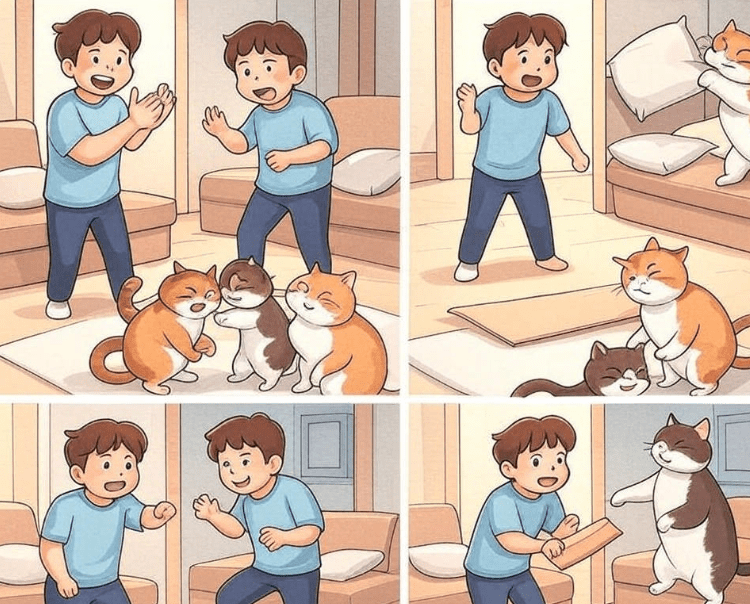
Gently herd them into separate rooms (use treats to lure them if needed).
Give them at least 30 minutes to calm down before reintroducing.
Never:
Yell or hit—this increases stress and worsens aggression.
Pull them apart with your hands—you’ll likely get bitten or scratched.
Long-Term Peacekeeping: How to Stop Aggression for Good
Quick fixes don’t last. For true harmony, you need a structured, patient approach.
The Slow and Steady Reintroduction
If aggression is severe, treat the pets as if they’ve never met:
Scent Swapping: Rub a towel on one pet and let the other sniff it.
Mealtime Bonding: Feed them on opposite sides of a closed door so they associate each other’s scent with something positive (food).
Controlled Visual Access: Use a baby gate so they can see but not touch each other.
Environmental Harmony

Multiple Resources: Ensure each pet has its own food bowl, water station, litter box, and sleeping area.
Vertical Space: Cat trees and shelves give cats escape routes and territory.
Safe Zones: Small pets (like rabbits) should have predator-proof enclosures.
Behavior Modification
Positive Reinforcement: Reward calm behavior with treats and praise.
Interactive Play: Use wand toys to redirect aggressive energy into hunting games.
Pheromone Therapy: Products like Feliway mimic calming cat scents, reducing stress.
When to Call for Backup
If aggression doesn’t improve—or if pets are injuring each other—seek help from:
A veterinarian (to rule out medical causes).
A certified animal behaviorist (for tailored training plans).
A Tale of Two Cats: From Enemies to Nap Partners
When Maya adopted a second cat, Leo, her resident cat, Simba, was furious. For weeks, Simba stalked Leo, attacking him at every opportunity. The house was a battlefield.
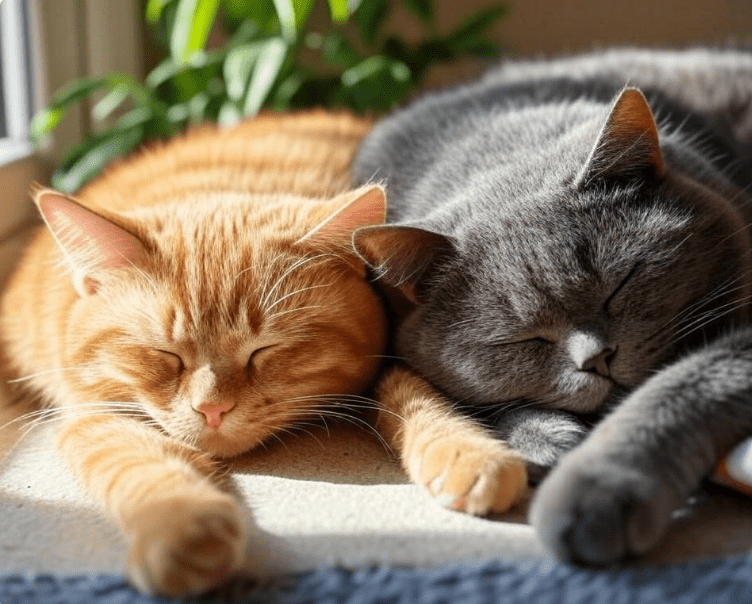
Determined to help them coexist, Maya:
Fed them on opposite sides of a door, gradually moving bowls closer.
Used treats to reward calm behavior when they were in the same room.
Provided separate high perches so each cat could claim its own space.
After two months of patience, the impossible happened: Simba and Leo curled up together on the windowsill, basking in the sun.
Moral of the story? With time and effort, even the fiercest rivals can learn to live in peace.
Final Thoughts

Aggression towards other pets doesn’t have to be a permanent problem. By understanding the why behind the behavior and implementing consistent, compassionate solutions, you can turn your home back into a sanctuary.
Key Takeaways:
Identify the type of aggression (territorial, fear-based, etc.) to address the root cause.
Learn to read feline body language so you can intervene before fights start.
Use safe, effective methods to break up fights without getting hurt.
Commit to long-term strategies like reintroduction, environmental changes, and positive reinforcement.
Know when to seek professional help—some cases need expert intervention.
The journey to peace begins today. With patience, love, and the right approach, your pets can go from foes to friends.

